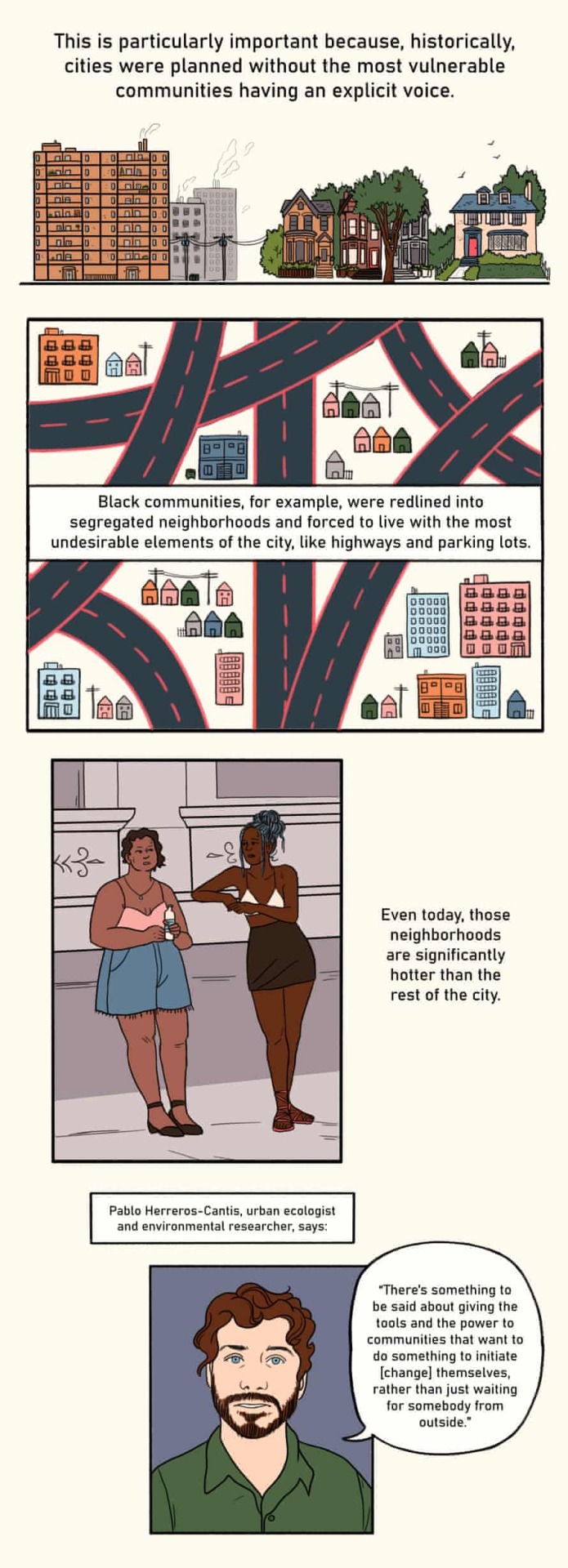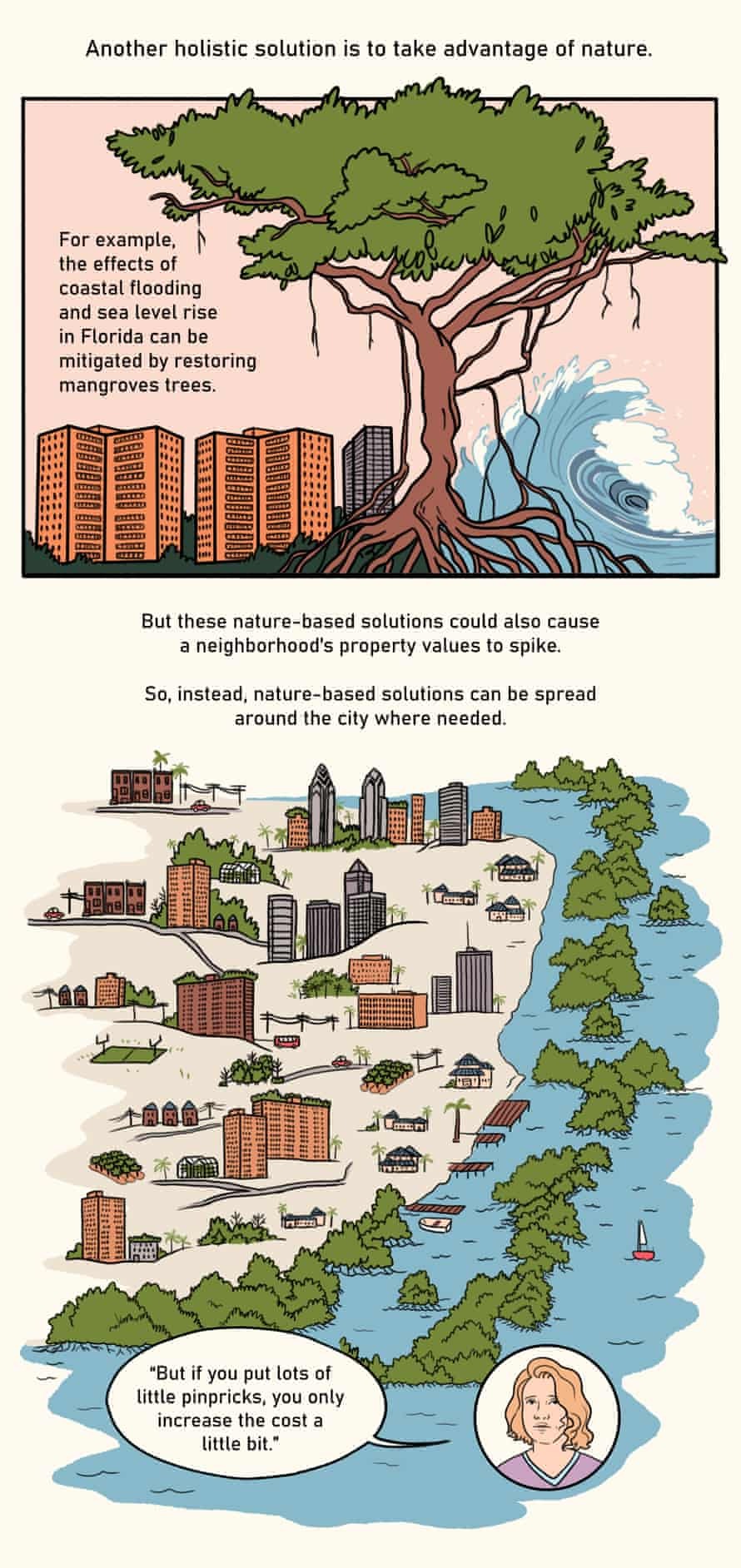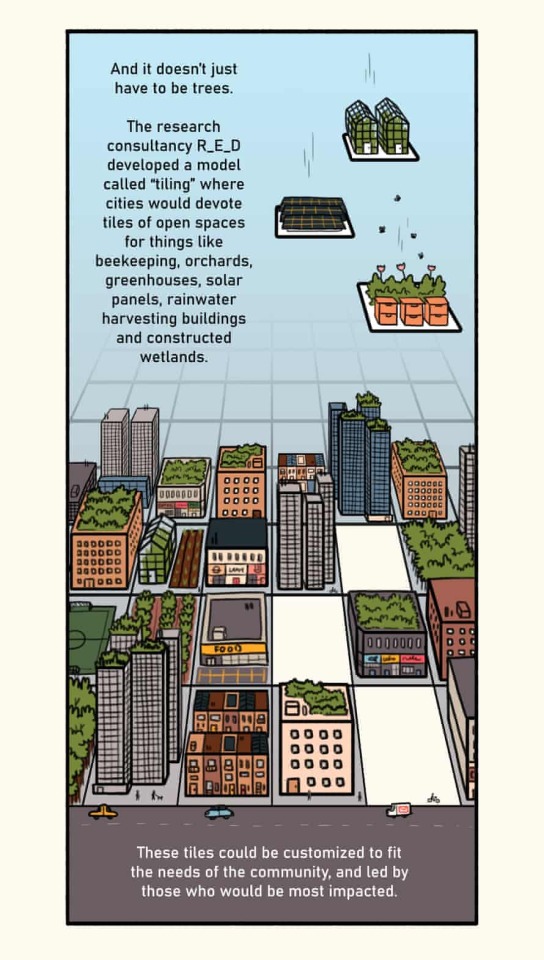Don't Commodify Us. Humanize Us. When You Commodify Environmentalists For Your Earth Month Strategy,






Don't commodify us. Humanize us. When you commodify environmentalists for your Earth Month strategy, you are dehumanizing our culture, values, and work. While we may have heard greenwashing used, Earth Washing focuses on the mass production based on raising awareness for the protection of the planet. Unfortunately, the extraction rate to create products such as Earth Day T-Shirts, posters, or Earth Day collections is not as ethical as we think they are. To me, environmentalism is more like dismantling white supremacy, than it is a tee or a slogan. Many large-scale corporations that sell ideas of planting trees for every purchase you make are still linked to funding private prisons, slave labor, and the further depletion of natural resources in their supply chain. For many BIPOC communities, Earth Month is every day and justice is still not served. Indigenous People's world views, beliefs, and cultural traditions are essential when fighting for environmental justice. Community-based frameworks are crucial. We must elevate the ideas from Indigenous communities and communities of color that have faced high rates of injustice head on. They know firsthand what it's like to live in a world that inflicts violence, pain, and trauma on those who actively protect Earth, and to still protect it anyways. Yes, Earth Month is an opportunity for many environmentalists to get paid and recognized for our work (we're typically not the guest speaker of choice in a market based on overconsumption). While we are NOT going to shame those trying their best to earn funds for their work, we can critically extend ourselves to redistribute the funds to BIPOC activists and organizations that are often left out from media conversations. While we all contribute to forms of Earth Washing, we can always directly help those who continue to fight against environmental injustices.
-queer brown vegan
More Posts from Blakezimmermanhouston and Others
![An Epic View From 5,000 Meters Up In Peru’s Cordillera Huayhuash. [OC] [2800 X 3733] - ObamasLoveChild](https://64.media.tumblr.com/2a2fd4c26add231ceb59ceb943908ce6/19828a72915423c7-05/s500x750/5fdd1961a7be13547d83d9a05dcec1411985f39c.jpg)
An epic view from 5,000 meters up in Peru’s Cordillera Huayhuash. [OC] [2800 x 3733] - ObamasLoveChild








Blake Zimmerman of Houston, Texas explains microgrids and the use of them to promote sustainability. https://blakezimmermanhouston.net/


Tree House, Singapore (kevouthere)
Most people don’t realize that conventional dairy already has been focused on sustainability, we just don’t advertise
- We sequester carbon with the crops growing for the cows
- We use organic fertilizer from the cows instead on relying on synthetic fertilizers
- We recycle all our water to grow crops for the cows
- Cows up-cycle food byproducts into usable nutrition that would otherwise go to a landfill
Cows are a valuable part of the earths ecology and ecosystems. Many dairy farms today are installing methane digesters- that take cow manure, capture the emissions, and make renewable power. Installing these systems make dairies carbon negative meaning they are taking out more emissions than they are creating.








If you’ve been trying to go plastic free for awhile you’ve probably accumulated quite a few jars some way or another. I often buy in jars and will keep them for upcycling, but sometimes I run out of ideas on how to reuse them. These are some good ways to repurpose those jars. In addition to these some zero waste stores will take cleaned jars for people who don’t have containers but are looking for a refill. While some of these are exclusively for glass, some of these ideas work for plastic containers too! Happy upcycling!
photo credit to zerowastenerd on instagram







(Full collection in link)

photo by ©mustafakılınç
-
 traumapissbb liked this · 1 year ago
traumapissbb liked this · 1 year ago -
 anxiousxnerd liked this · 1 year ago
anxiousxnerd liked this · 1 year ago -
 limerenceofawolf liked this · 1 year ago
limerenceofawolf liked this · 1 year ago -
 androjenous liked this · 2 years ago
androjenous liked this · 2 years ago -
 lezzeplin liked this · 2 years ago
lezzeplin liked this · 2 years ago -
 moongazinghare1111 liked this · 2 years ago
moongazinghare1111 liked this · 2 years ago -
 skzbias3113 liked this · 2 years ago
skzbias3113 liked this · 2 years ago -
 oceanicdruid reblogged this · 2 years ago
oceanicdruid reblogged this · 2 years ago -
 onegreenthing reblogged this · 2 years ago
onegreenthing reblogged this · 2 years ago -
 herbalfaerie reblogged this · 2 years ago
herbalfaerie reblogged this · 2 years ago -
 herbalfaerie liked this · 2 years ago
herbalfaerie liked this · 2 years ago -
 phoenixjessicaross64 liked this · 2 years ago
phoenixjessicaross64 liked this · 2 years ago -
 acesolaris liked this · 2 years ago
acesolaris liked this · 2 years ago -
 teddybeardreaming liked this · 2 years ago
teddybeardreaming liked this · 2 years ago -
 ritathememermaid liked this · 2 years ago
ritathememermaid liked this · 2 years ago -
 thermosjettison liked this · 2 years ago
thermosjettison liked this · 2 years ago -
 symbioticus liked this · 2 years ago
symbioticus liked this · 2 years ago -
 eles-soul liked this · 2 years ago
eles-soul liked this · 2 years ago -
 wicked-witch-ofthe-east liked this · 2 years ago
wicked-witch-ofthe-east liked this · 2 years ago -
 divinegarbage liked this · 2 years ago
divinegarbage liked this · 2 years ago -
 suffragistcity liked this · 2 years ago
suffragistcity liked this · 2 years ago -
 tittysmith liked this · 2 years ago
tittysmith liked this · 2 years ago -
 jcsantos21 reblogged this · 3 years ago
jcsantos21 reblogged this · 3 years ago -
 jcsantos21 liked this · 3 years ago
jcsantos21 liked this · 3 years ago -
 ana-pt reblogged this · 3 years ago
ana-pt reblogged this · 3 years ago -
 u-need-a-nap liked this · 3 years ago
u-need-a-nap liked this · 3 years ago -
 bobrosseswhitepaint liked this · 3 years ago
bobrosseswhitepaint liked this · 3 years ago -
 coffeewithmeaning liked this · 3 years ago
coffeewithmeaning liked this · 3 years ago -
 bluehoodedhuntress liked this · 3 years ago
bluehoodedhuntress liked this · 3 years ago -
 naytin reblogged this · 3 years ago
naytin reblogged this · 3 years ago -
 amateurvenn liked this · 3 years ago
amateurvenn liked this · 3 years ago -
 patriciamccarthy liked this · 3 years ago
patriciamccarthy liked this · 3 years ago -
 byzbee liked this · 3 years ago
byzbee liked this · 3 years ago -
 starsailor83 reblogged this · 3 years ago
starsailor83 reblogged this · 3 years ago -
 starsailor83 liked this · 3 years ago
starsailor83 liked this · 3 years ago -
 juelz3210 reblogged this · 3 years ago
juelz3210 reblogged this · 3 years ago -
 lost-xim reblogged this · 3 years ago
lost-xim reblogged this · 3 years ago -
 queerbrownvegan reblogged this · 3 years ago
queerbrownvegan reblogged this · 3 years ago -
 comradebread7 liked this · 3 years ago
comradebread7 liked this · 3 years ago
Blake Zimmerman, of Houston, TX, is a senior sales executive for Enchanted Rock LTD. A proud alumnus of Texas A&M, Blake has always been able to focus on a problem and come up with an effective solution. Throughout his highly successful career, Blake has utilized his passion and knowledge for application engineering, PetroChem, Plastics, and system design.
41 posts